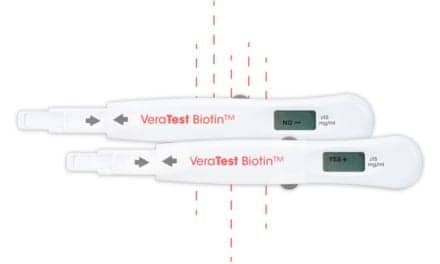A coalition of more than 40 healthcare and patient advocacy organizations has launched a targeted effort to improve the quality of medical diagnoses, especially those that can result in patient harm. Researchers estimate that up to 80,000 deaths in US hospitals each year can be attributed to inaccurate or delayed diagnoses.
Act for Better Diagnosis, an initiative of the Society to Improve Diagnosis in Medicine (SIDM), aims to improve the diagnostic process by calling on organizations to identify and share practical steps to ensure that diagnoses are accurate, communicated, and timely.
“Providing an accurate medical diagnosis is complex and involves uncertainty, but it’s obviously essential to effective and timely treatment,” says Paul L. Epner, cofounder and CEO of SIDM. “Nearly everyone will receive an inaccurate diagnosis at some point in their life, and for some the consequences will be grave. Major improvement is needed to systematically identify how to improve diagnostic quality and reduce harm to patients.”
Each year, diagnostic error affects 12 million adults in outpatient settings and is the most common cause of medical errors reported by patients.
Working in collaboration over several months, members of the SIDM-led Coalition to Improve Diagnosis, comprising premier national healthcare and patient advocacy organizations, identified initial obstacles they believe impede diagnostic accuracy, including:
- Incomplete communication during care transitions. When patients transfer between facilities, physicians, or departments, there is potential for important information to slip through the cracks.
- Lack of measures and feedback. Unlike many other patient safety issues, there are no standardized measures for hospitals, health systems, or physicians to understand their performance in the diagnostic process, to guide improvement efforts, or to report diagnostic errors. Providers rarely get feedback if a diagnosis was incorrect or changed.
- Limited support to help with clinical reasoning. With hundreds of potential explanations for each symptom, clinicians need timely, efficient access to tools and resources to assist in making diagnoses.
- Limited time. Patients and their care providers overwhelmingly report feeling rushed by limited appointment times, which poses real risks to gathering a complete history and allows scant opportunity to thoroughly discuss any further steps in the diagnostic process and set appropriate expectations.
- Complicated diagnostic process. There is limited information available to patients about what questions to ask, whom to notify when changes in their condition occur, or what constitutes serious symptoms. It’s also unclear who is responsible for closing the loop on test results and referrals, and how to communicate follow-up.
- Lack of research funding. The impact of inaccurate or delayed diagnoses on healthcare costs and patient harm has not been clearly articulated, and there is a limited amount of published evidence to identify what improves the diagnostic process.
The organizations behind the effort, which represent clinicians, patients, health systems, researchers, and testing professionals, acknowledge that improvement will require sustained work over several years with all stakeholders engaged.
“The diagnostic process can be complex as well as emotional and fearful for women heart patients,” says Evan McCabe, RN, MN, chair of the WomenHeart board of directors. “Having the right information to help mitigate the fear of the unknown is crucial. It’s important that healthcare providers listen to patients and have the research and other tools they need to provide answers.”
Members of the coalition are taking action to improve the accuracy and timeliness of diagnoses, naming tactics like providing online tools that help physicians recognize and avoid diagnostic pitfalls and improving medical education for new practitioners, as well as using tools to support patients as they seek to get a diagnosis. They will also develop tools that empower doctors, patients, and caregivers to communicate test results in plain language.
In the United States, the FY 2018 Omnibus Appropriations Act included language emphasizing that improved diagnosis is a “moral, professional, and public health imperative,” and requested that “the Agency for Healthcare Research and Quality (AHRQ) convene a cross-agency working group to propose a strategy to enhance scientific research to improve diagnosis in healthcare.” The report also recommended including consideration of opportunities for public-private partnerships and the development of centers of excellence to propel research forward to improve diagnostic quality and safety.1
“The diagnosis process—thinking through a patient’s clinical presentation—is a defining task for our profession, and for internal medicine specialists and subspecialists in particular,” says Ana María López, MD, MPH, FACP, president of the American College of Physicians. “Critically assessing diagnostic decisionmaking reveals knowledge gaps, communication pitfalls, and risk for errors.”
Act for Better Diagnosis is supported by the Gordon and Betty Moore Foundation and the Mont Fund. Coalition members encourage everyone to share what actions they are taking to improve diagnosis using the social media tag #betterdiagnosis.
To learn more and view a comprehensive list of coalition members, visit the Coalition to Improve Diagnosis.
Reference
1. United States, Congress, House. Consolidated Appropriations Act, 2018. Congress.gov. https://www.congress.gov/bill/115th-congress/house-bill/1625/text. 115th Congress, House Resolution 1625, passed March 23, 2018.




